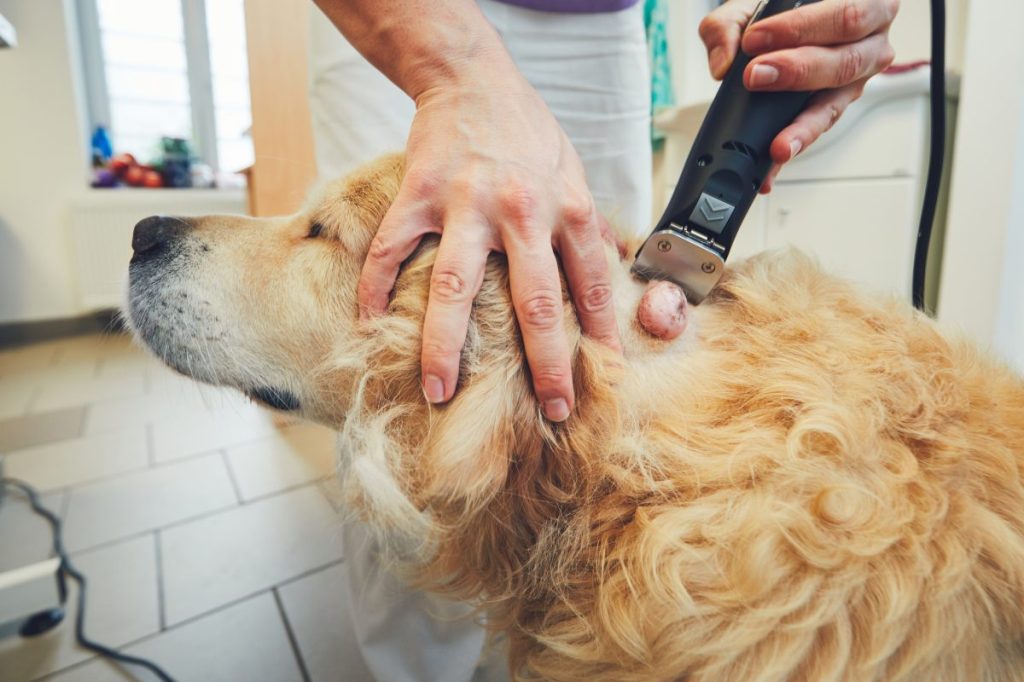It’s a dog owner’s worst nightmare hearing the four words: “Your dog has cancer.” But it’s a stark reality for many. In fact, one in three dogs will develop cancer, according to the National Canine Cancer Foundation. Cancer occurs in both mixed-breed and purebred dogs. Depending on the type of cancer, some breeds like Great Danes, Saint Bernards, Boxers, Boston Terriers, and Golden Retrievers are high risk. Canine cancer can happen at any age but most often it occurs in older dogs, which is partially because dogs are living longer due to modern, enhanced nutrition and veterinary care.
Defining cancer
Before we get to the symptoms, it’s important to define cancer. Cancer is a disease where cells grow out of control, invade surrounding tissue, and spread (metastasize). Just like in humans, cancer can take many forms in dogs. The disease can be localized (in one area) or generalized (spread throughout the body). Cancer is considered multifactorial, which means it has no known single cause. However, heredity and the environment are likely factors.
According to the American Kennel Club’s Canine Health Foundation, the most common types of canine cancer include:
Catch it early
While canine cancer can be treated (with varying success) using surgery, chemotherapy, radiation, and immunotherapy, the best thing you can do is to catch the disease in its early stages, before it spreads. Early detection is critical for successful treatment and recovery.
One of the most common ways dog parents detect cancer is by finding a lump or a mass on their dog. The dog typically isn’t bothered by the lump. But just because you find a lump, doesn’t mean it’s cancer. Still, a veterinarian should investigate any lump as soon as possible.
Symptoms to watch for
The National Canine Cancer Foundation says there are 10 warning signs your dog might have cancer:
- Abnormal swelling that persists or continues to grow
- Sores that don’t heal
- Weight loss
- Loss of appetite
- Bleeding or discharge from any body opening
- Offensive odor
- Difficulty eating or swallowing
- Hesitation to exercise or loss of stamina
- Persistent lameness or stiffness
- Difficulty breathing, urinating, or defecating.
If you find a lump or your dog has any of the other symptoms above, don’t delay in seeing your veterinarian. If it’s confirmed your dog has cancer, it’s advised to get a second opinion — possibly by a board-certified veterinary oncologist — to discuss your options.
Some cancers can be cured with one or a combination of treatments, but sadly, many cannot and merely delay the inevitable. Some pet owners opt out of treatment completely and instead help their dogs with pain management (palliative care) throughout the course of the disease.
While not all cancers are preventable, pet parents can take certain steps to lower their dogs’ risk. For example, spaying or neutering your dog at a young age can help prevent reproductive cancers. Some veterinary experts encourage giving your dog supplements containing vitamins A, C, E, beta carotene, lycopene, and the mineral selenium to help ward off cancer. Healthy nutrition and exercise are also believed to help prevent cancer from developing.









